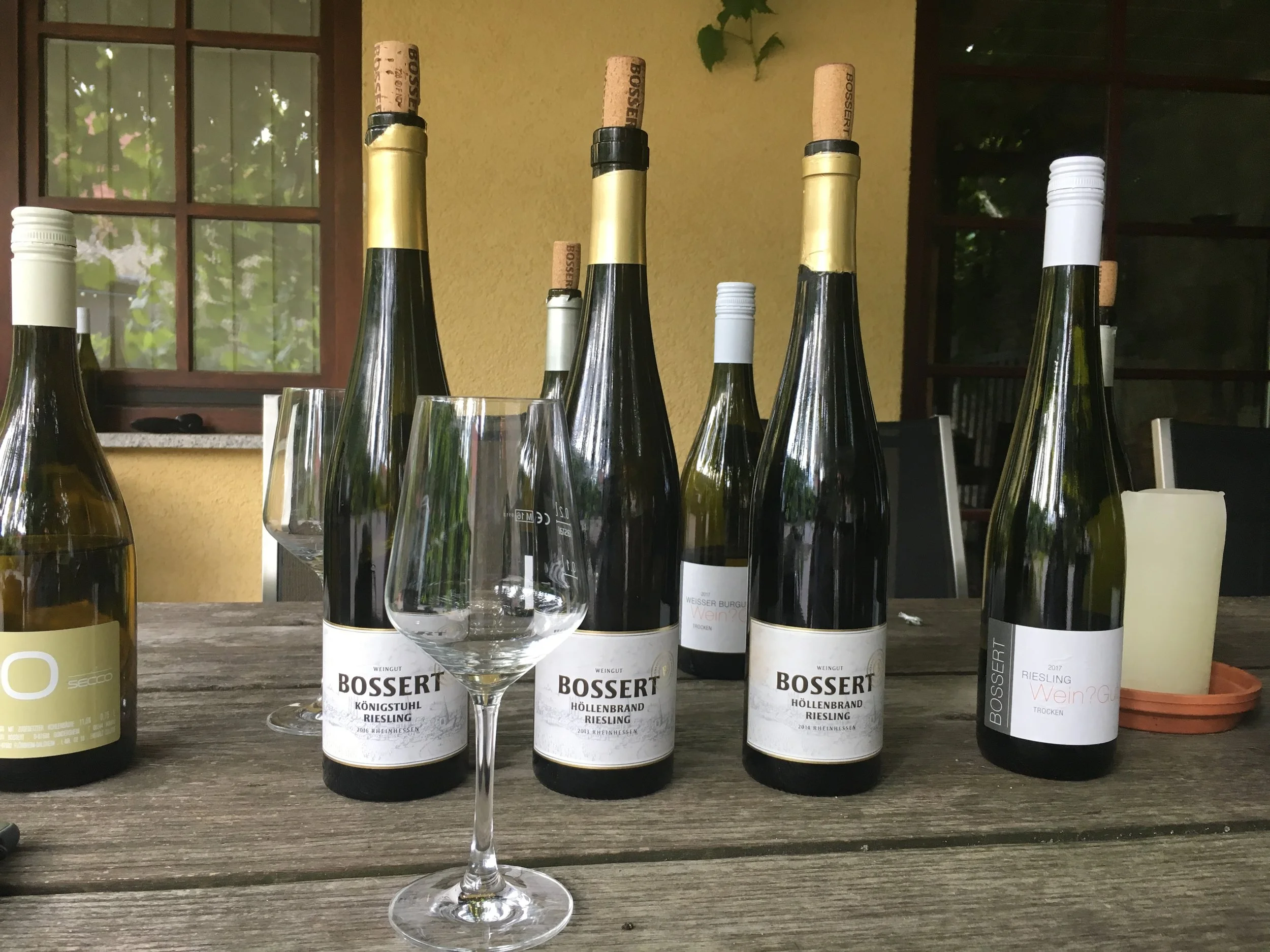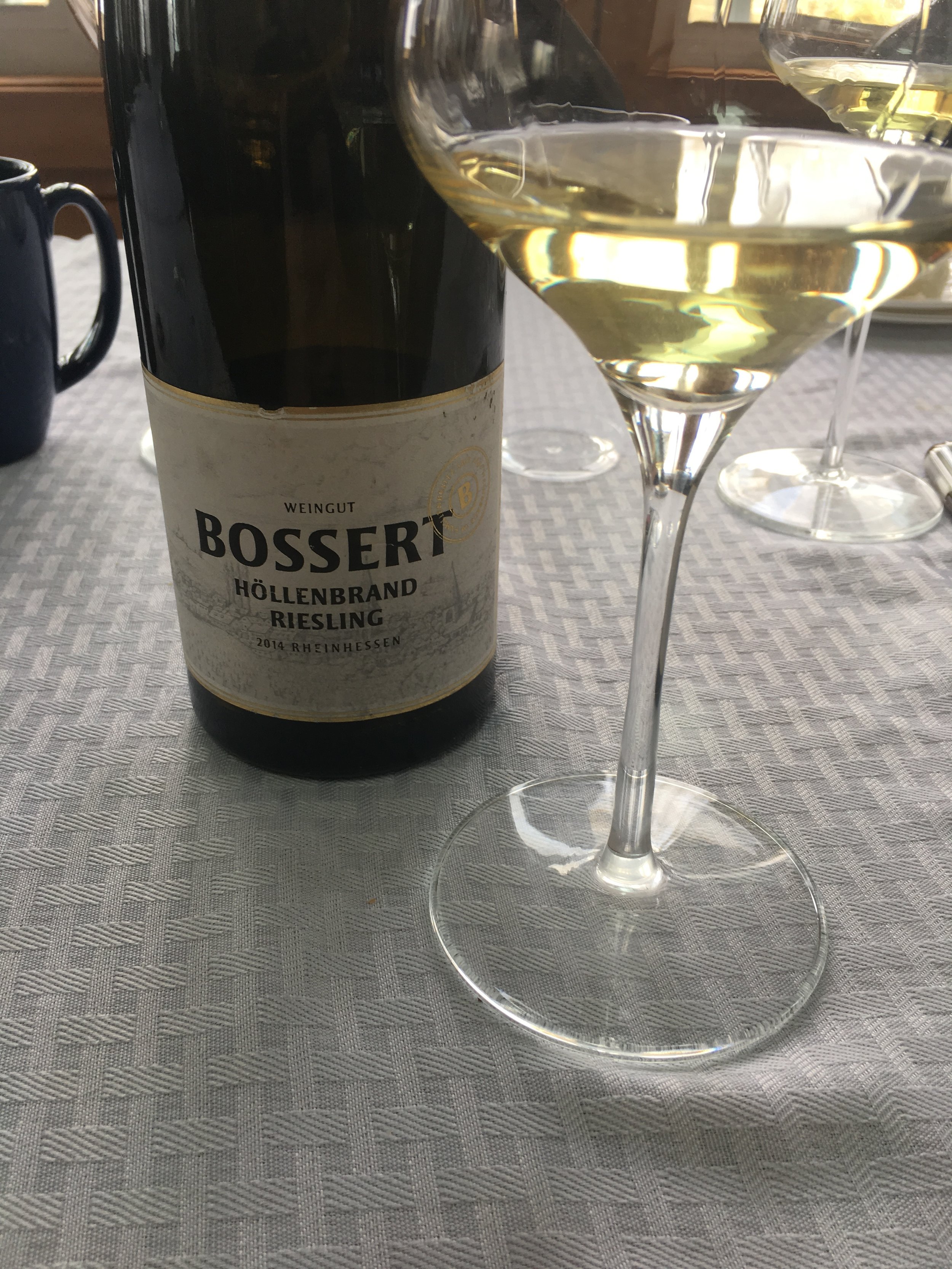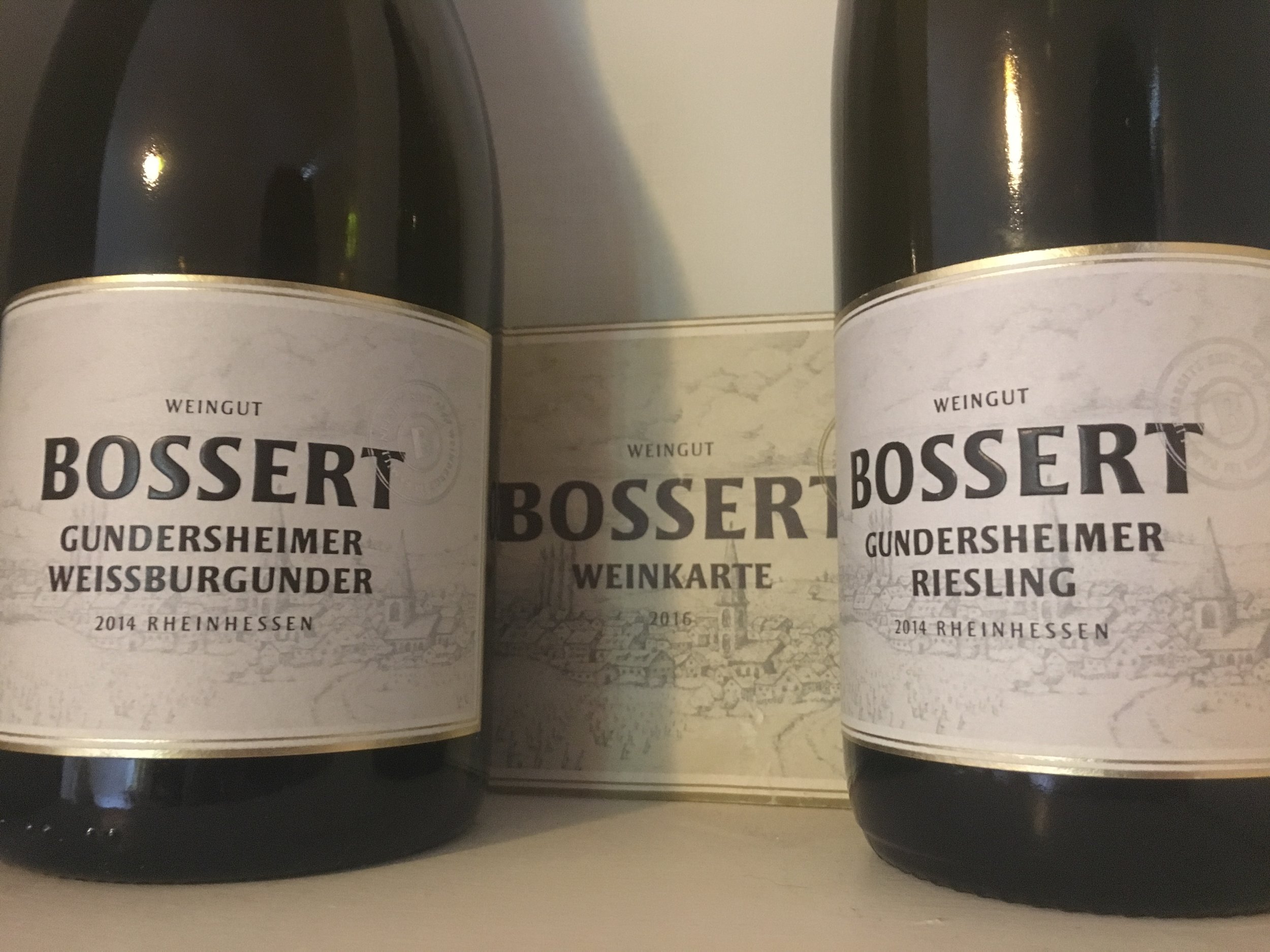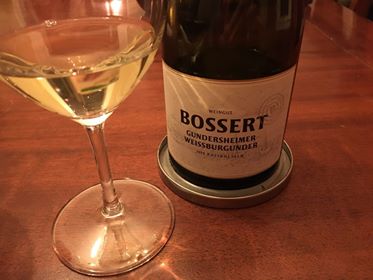Tucked away a short train ride south of Frankfurt lies the lovely little village of Gundersheim. As you take the Bahn west of Worms, you are greeted by gentle rolling hills covered with beautifully manicured vineyards. Though a majority of these plantings produce vast quantities of simple landwein, there are two sites quickly gaining acclaim surrounding the small village, a feat largely due to the work of the equally youthful rising stars Philipp and Johanna Bossert.
This sibling winemaking team, like their prized lagen, have deep roots in the local wine history. Their great-grandparents first cultivated the vine in the surrounding hillside in 1848, a tradition that has carried on since. Hermann, their father, rejuvenated the cellar and winery in the 1990s and gave over a small portion of production for his children “to play.” They have quickly gained a reputation for creating exquisite premier wines, and for good reason. Before completing his education at the Geisenheim University, Philipp spent time studying at the esteemed Austrian Weingut Bründlmayer and Château de Pommard in Burgundy, where he developed a passion for Spätburgunder. He has combined his two experiences to develop a Spätburgunder block on the rare Lyra trellis system in the nearby Höllenbrand vineyard. The younger of the siblings, Johanna, likewise graduated from Geisenheim University after an internship at the Swiss Weingut Fromm. Though she is the more aggressive of the two at promoting their wines, she is often found out in the vineyards meticulously tending the vines. The level of detail she brings to each vine is truly impressive.
Philipp always refers to “play” when it comes to his process. Their landwein Riesling is split into 5 – 1000L batches. The first three are inoculated with different yeast strains, while the remaining two utilize spontaneous yeast. Depending on the vintage, juice might spend a brief period macerating to help lower the acidity before being chilled and left to settle. The juice is then split into the separate stainless steel tanks for fermentation. Ultimately, the final blend is achieved based on his sensory analysis of the separate batches. It ultimately has the same character, but the journey to the finished result may veer with each vintage. If you ask him to explain his reasoning for any one decision, he simply states, "You must play!" with a slight shrug and mischievous grin.
Combining their pedigree, intensive education, and a good measure of hard work and humility, it is easy to see the potential this duo has before you first bring the glass to your nose. They have worked tirelessly to develop the vines on their nearby sites, Höllenbrand and Königstuhl. Höllenbrand is a hill just north of Gundersheim. With a strong southern facing, Philipp prefers this site for his Lyra Spätburgunder. Likewise, in 2016, he was replanting a Riesling block to benefit from this warmer site. Again on Lyra trellis. The blocks located on Königstuhl are more varied, both in orientation and grape varietal. This largely retains their plantings for their Ortsweine labels, though an exciting, complex single-vineyard Riesling was made while waiting for the new Lyra vineyard to mature.
A young cluster of Riesling being “halved” to prevent mold growth and allow development.
Johanna prefers to be out in the vineyard and takes a more optimistic viewpoint towards their process. Whereas Philipp would say, “This is not good,” regarding the current condition of the fruit, Johanna’s response would be “These are not yet ready. This is what we are looking for.” However, her approach in the vineyard allows no room for error. It will be done right, or not at all. This fierce approach is also present when she tastes wines with clients, often expressing “This is why our wines are so good.” It is a character she inherited from their father, Hermann, an experienced vintner and grower confident in his process and unyielding in his efforts.
Lyra Trellis supporting Pinot Noir in Weingut Bossert’s Höllenbrand Vineyard.
Both vineyards share a similar soil composition: loess clay situated over limestone, with more limestone marl in Königstuhl. The primary difference comes from their orientation. Höllenbrand, roughly translating to “Hell’s fire,” refers to the scorched earth due to its direct southern exposure, providing the vine with ample light and warmth to obtain riper, more robust fruit. Conversely, Königstuhl’s contour collects a regular breeze that helps dry the fruit from early-morning dew, preventing early onset of mold or fungal issues and allowing for a longer, slower ripening.
Johanna’s favorite site is an old limestone quarry. Her, you can see the multiple layers of soil. First, the loess loam and clay (tonne) for roughly a meter. Then, a deep layer of limestone (kalk). This kalk is important for proper drainage and expressing the mineral edge to their wines. The quarry itself was used in the early 1900s. Horse-drawn wagons would haul the cut stone to train depots. Today, it is a nature preservation and home to one very large owl.
During my stay, I had the great fortune of tasting a wide range of their wines, including Hermann’s prized “Millenium Wine,” a delicious late harvest Müller-Thurgau wine from the 1999 vintage, though harvested January 1st, 2000. He has precious few bottles left, so I must admit, I didn’t write down any notes but simply cherished the wine. Though the siblings are responsible for the premium range, there is nothing ordinary about Hermann’s wines. In particular, his 2015 Weissburgunder from Königstuhl, simply labeled “Gundersheimer,” overperforms any village wine I’ve tried. Cool, fresh fruit notes of pear, tart lychee and kiwi, and melon rind appear directly on the nose. A mild, lingering acidity with pops of fruit helps keep the wine fresh. There is a certain weight and richness towards the midpalate followed by a return of tight acidity and minerality expressing the limestone soil with a slight salinity, making the wine bold and exuberant without being too imposing, a trait shared by its winemaker. All of Hermann’s wines showcase a similar acid-mineral relationship which makes them downright quaffable. I carried as many bottles as my pack would hold all the way to Sienna.
The siblings craft three lines of wines: their black capsule (Gutsweine), silver capsule (Ortsweine), and gold capsule (Lagenweine). Each line includes both a Riesling and Pinot Noir with a Gundersheimer Weissburgunder at theOrtsweine level. I was fortunate enough to try the entire 2015 vintage of Rieslings and 2014 Pinot Noir:
The 2015 Gutswein Riesling shows bright fruit noes of melon, pear, white peach, and soft hints of green apple (Philipp is not a fan of fermenting his whites at too low a temperature creating the “green apple Jolly Rancher” character too commonly seen). Rich floral notes of honeysuckle, though not too sweet, follow with salty sandstone. The wine has a rich mouthfeel yet is extremely gripping. A soft attack that swells suddenly showcasing the grape’s strength.
The 2015 Gundersheimer Riesling (silver capsule) went through spontaneous fermentation though is very clean with cool, fresh fruit. Where the Gutswein expressed power, the Ortswein shows finesse. Light notes of honeysuckle, less prominent than the Gutswein, though sweeter, balances aromas of honeydew, nectarine, and light kiwi notes. Careful hand pruning was done to keep the native yeast healthy – one leaf was left next to each cluster to provide nutrient to kickstart fermentation.
The 2015 Lagenwein Riesling was from the Königstuhl vineyard and barrel-aged on the gross lees. Lean fruit mixes with soft floral expression and a light yeast note. Tropical fruit notes verge from tart to ripe with a light cream and banana toffee caramel finish with very subtle oak notes. The acidity is very focused yet with a round texture carrying a persistent, complex finish.
The 2014 Gutswein Spätburgunder expresses tart cherry and boysenberry notes with soft phenolic notes from the grape seeds. Light smoke and earth mix with leaf and stem notes due to the limited whole-cluster inclusion. A supple mouthfeel with occasional bursts of acidity and a pleasant, simple finish. The character reminds me of that of a child’s light easy dance showing their impatience.
The 2014 Gundersheimer Spätburgunder shows more earth and smoke than the Gutswein with subtle notes of green tobacco and violet. Tart, black cherry and raspberry followed by vanilla and tree bark. The fruit flavor quickly dissipates into more savory, complex tones. The child had matured a bit, but this wine still dances nonetheless.
The 2014 Höllenbrand Lyra Spätburgunder was a barrel sample which had spent 18 months in French Oak. Tart black cherry and raspberry notes dominate the nose, though sadly it was slightly closed off at the time. However, the texture showed the true quality of the wine with long lasting acidity and a tight, fine tannin structure.
Additionally, we sampled the 2012 Höllenbrand Lyra Spätburgunder which was available. Those additional two years were well worth the wait, as the wine had achieved an incredible balance of fruit, earth, minerality, and oak. Mild cherry, boysenberry, and prune followed by spice and vanilla. The wine was a clear garnet fading to brick showing is maturity, though the wine was still brightly acidic and showed enough warmth and richness from alcohol that was supported by a beautiful texture and length. Had my pack had any more room, I would have purchased their remaining stock.
One note you cannot express in mere tasting notes: every wine shared the same aromas present in the winery and that of the village itself. I wasn’t really able to truly appreciate it until I recently opened a bottle and was instantly transported back to Gundersheim. Earlier this year (in April of 2018), I opened one my remaining (treasured) bottles: the 2014 Gundersheimer Weissburgunder.
The wine was star bright straw yellow of a medium color intensity. It was quite fruit forward, with tart tree fruits and ripe citrus, yellow pear, yellow apple, and quince. Lemon and lime peel moved into hints of star fruit. Yellow and white flowers aligned with a slight waxiness and herbal note. Watercress, parsley and radish. Slight chalk and sedimentary rock showed toward the finish (and I was reminded of the Quarry visit with Johanna). The structure had a very sharp acidity that was lingering with a slight bitterness providing a more complex texture. I savored every last drop and wished for a second bottle, as the wine could easily have aged several more years.
Should you find yourself visiting the Rheinhessen, make your way out south of Frankfurt to the tiny village of Gundersheim. Weingut Bossert’s wines speak for themselves, yet the hospitality of its family goes above and beyond.
A special thanks to Philipp and Emily, my hosts, and congratulations on your marriage! Thank you, Philipp, for imparting just a fraction of your vast knowledge in the cellar. We have utilized some of your suggestions in our own wine endeavor. Thank you, Johanna, for your patience with my array of questions regarding your viticulture practices and for the tour of the quarry. Thank you, Emily, for being such a generous host (as well as translating!). And thank you to the rest of the Bossert family for taking the time to share your history, hospitality, and wines. All the best!
